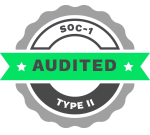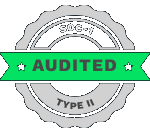Energy
Bridging the gap between strategies and implementation with solutions for the energy industry.
The concept of energy, in the distant past, was used to explain easily observable phenomena, such as the effects observed on the properties of objects or any other changes. It was generally construed that all changes could be explained through some sort of energy.
Soon, the idea that energy could be stored in objects took its roots in scientific thought, and the concept of energy came to embrace the idea of the potential for change as well as change itself. Such effects (both potential and realized) come in many different forms.
While in spiritualism the effects were reflected in changes in a person, in physical sciences they were reflected in different forms of energy itself. For example, electrical energy stored in a battery, chemical energy stored in a piece of food (along with the oxygen needed to burn it), thermal energy of a water heater, or kinetic energy of a moving train.
In 1807, Thomas Young was the first to use the term “energy” instead of Vis viva to refer to the product of the mass of an object and its velocity squared. Gustave-Gaspard Coriolis described “kinetic energy” in 1829 in its modern sense, and in 1853, William Rankine coined the term “potential energy.”
Green Energy
Global warming and environment degradation add to the increasing pressure on non-renewable sources of energy.
Ever increasing economic growth increases the pressures on the environment. Growing demand for energy, land space and other resources have led to an increased strain on traditional energy resources such as fossil fuels.
Finding and tapping into new reserves for these resources have become an almost insurmountable challenge for traditional sources of energy.
Green energy refers to forms of energy created from renewable sources such as water, wind and the sun. These methods are becoming increasingly popular as they reduce the pressure and environmental impacts of conventional methods of energy generation and increase nations’ energy independence.
Nuclear
Nuclear power opens up feasible opportunities for power generation and meeting increasing demands.
Nuclear power is the controlled use of nuclear reactions to release energy for work, including propulsion, heat, and the generation of electricity. Human use of nuclear power to do significant useful work is currently limited to nuclear fission and radioactive decay.
Nuclear energy is produced when a fissile material, such as uranium-235 (235U), is concentrated such that nuclear fission takes place in a controlled chain reaction and creates heat — which is used to boil water, produce steam, and drive a steam turbine. The turbine can be used for mechanical work and also to generate electricity.
Nuclear power is used to power most military submarines and aircraft carriers and provides 7% of the world’s energy and 15.7% of the world’s electricity.
The United States produces the most nuclear energy, with nuclear power providing 20% of the electricity it consumes, while France produces the highest percentage of its electrical energy from nuclear reactors—80% as of 2006.
Nuclear energy policy, of course, differs between countries.
Nuclear energy uses an abundant, widely distributed fuel, and mitigates the greenhouse effect if used to replace fossil-fuel-derived electricity.
International research is ongoing into various safety improvements, the use of nuclear fusion and additional uses such as the generation of hydrogen (in support of hydrogen economy schemes), for desalinating seawater, and for use in district heating systems.
Financial Evaluations
Financial evaluations can reduce errors and miscalculations at every stage of the project.
Financial analysis can be provided for all projects. These analyses provide break even, cash flow and go or no-go projections.
BluEnt provides quality-engineering services on time, on schedule and within budget by performing the work correctly the first time. We accept the most challenging problems and look forward to working with the client.
We believe that the client should be an active participant in the work process to ensure that the product is commensurate with client expectations.
Management Evaluations
BluEnt works with the client as a team to ensure proper understanding of every requirement.
Oversight to management can be provided by BluEnt to ensure that proper training has been performed and direction of the work is appropriate. Additionally, BluEnt can provide assistance for final review boards and oversight committees.
We believe that the client should be an active member in the development of the product or throughout the service process to ensure each requirement is dealt with.
BluEnt thrives on challenges and providing quality services, on time and within budget constraints. We strive to produce accurate, quality results the first time itself.
Power Plant Design and Analysis
Effectively approach the phases and processes involved in power plant design and analysis.
A plant design modification means any change to a current design that will fix a problem or improve a function, or a change that creates a new product design. Plant design occurs in three phases:
-
The conceptual phase is the “system analysis” phase where theoretical designs and/or changes are created and the pros and cons of the design are established.
-
Feasibility studies and cost evaluations.
-
The final products of the system analysis are the proposed new design(s) and/or design change(s), which have the best cost and benefit to the customer.
-
In some cases, a conceptual design has already been developed and the first phase is not required. If the conceptual design is already developed, it is wise to review the design for possible flaws and correct them before you proceed.
-
-
The “detailed design” phase produces the final design product.
-
The conceptual design is developed into a final detailed design package. All facets of engineering are involved.
-
The detailed design package includes design specifications, design drawings, design procedures, design requirements, quality assurance requirements, start-up specifications and requirements, and, if required, regulatory requirements.
-
-
The “design implementation” phase takes provides an implementation plan, which includes purchase of materials and/or equipment, start-up and/or retest requirements and procedures, and an implementation schedule, which includes estimated construction costs and schedules.
The processes that may be used during a plant design evolution are:
-
Computer Simulations
-
Design Audits
-
Analysis Verification
-
Computer Support
-
Design Review
-
Project Management
-
Financial Review
-
Quality Control and Assurance
-
Project Management
BluEnt can provide complete project management.
-
Initial conceptual design and cost estimates
-
PERT charts
-
Scheduling
-
Individual project management as needed
-
Project management training
We believe in providing quality services and accurate results on time by producing fast, precise results in the first go. We partner with our clients and involve them in every step of the process.
Quality Assurance
Correct design errors and implement design changes before adverse effect to performance.
BluEnt provides outstanding support for technical audits of procedures and calculations. Design audits consist of reviewing the procedures and processes for conducting design changes and design change implementation.
Audits are conducted based on a planned audit layout, which are devised by BluEnt and approved by the client. In addition, BluEnt can provide support for QA calculations and procedures and give/review presentations for regulatory groups.
Quality Assurance (QA) has a simple goal: to ensure that products perform the way they are supposed to. The quality of critical systems in the world is necessary for efficient and cost-effective operations.
This was shown in Japan in the 1970’s and 1980’s. Because of the Japanese successes, the USA adapted many of the Japanese approaches to QA.
It is believed that one of the primary reasons for US economic advantage throughout the world is aggressive QA programs.
For many years, the traditional way the Department of Defense (DOD) and commercial companies achieved quality was through systematic final inspection.
But now, intense competition has led some US companies to adopt total quality management practices that are prevention based. Consequently, quality assurance has taken on a broader meaning to include almost all the key design and engineering elements during development, transition to production, and production itself.
The commercial nuclear industry basic QA requirements are outlined in 10 CFR 50 Appendix B. These are enforced by the Nuclear Regulatory Commission (NRC).
Until recently, the DOD’s quality requirements were based on MIL-Q-9858A, a military standard established in 1963. Quality was theoretically ensured by requiring both the contractor and the government to monitor and inspect products.
In June 1994, the Secretary of Defense announced that commercial quality standards, such as ISO-9000, should replace MIL-Q-9858A where it makes sense. The DOD will not require MIL-Q-9858A on contracts awarded after October 1996.
Until then, the DOD will be approving the quality standards on a case-by-case basis at the request of the industry. The NRC and the DOD are working together to develop QA for DOD facilities.
Regulation Support
Regulatory support is the technical and licensing input for providing appropriate answers to regulatory agencies.
It may consist of performing calculations to develop a basis for the client’s position on an important issue or reviewing a regulatory position to ensure technical adequacy.
BluEnt provides:
-
Key technical input for questions asked by the regulatory agency.
-
Explicit understanding of the nuclear regulatory commission’s (NRC’s) operation.
-
Support for NRC audit or client self assessment audits.
Capabilities of BluEnt personnel:
-
Many years of experience in handling regulatory issues.
-
Have developed responses to bulletins, LERs, information notices, generic letters, and Request for Additional Information (RAI).
-
Have developed successful regulatory submittals for technical specification changes and other amendments to the operating license.
System Simulation
Comprehend and analyze system performance and detect errors.
Design and simulation represents two different areas, but they are connected through the same processes, i.e., an excellent understanding of system functions and integration.
Simulation of the system is imperative to sound engineering decisions in real time. It is used for better understanding and optimization of the performance and reliability of the system.
Costs incurred in repairing errors in subsequent phases of design are greatly reduced by system simulation earlier on in the design process.
System simulation also facilitates training by creating a virtual training environment.
Thermal Hydraulics
Because of the potentially complicated nature of thermal hydraulic engineering and analysis, the methods used to simulate the behavior of the multi-phase fluid flow are complicated. BluEnt assists companies with this.
Thermal hydraulics is the study and/or analysis of a fluid that is influenced by the addition of heat. The fluid could be a multi-component, multi-phase one that is usually flowing or accelerating in a fixed structure, e.g., piping system or large vessel.
The heat can be added in many different ways. For example, it can be added to the fluid from conduction through a heat exchanger or by radiation heat transfer from extremely hot rods.
Training
BluEnt strives to partner with clients and work together towards developing practical solutions.
We aspire to be a leader in providing safe, reliable and economical solutions to challenging problems, including training for:
-
Thermal hydraulic design and analysis
-
Use of a large selection of computer programs
-
Quality assurance
-
Design engineering
-
System simulation and evaluation
-
Root cause evaluations
-
10 CFR 50.59
Oil and Gas
Approach regulations, streamline operations and manage assets with BluEnt backing you every step of the way.
Real time management of assets in demand increases the value of those assets. Integrate your business processes within the organization, and with partners and resources.
This helps oil and natural gas companies address sustainability issues, adhere to regulations and manage financial and geopolitical risks.
Emerging markets around the world are fuelling a surge in the demand for energy. Hence, the focus of oil and gas organizations should be on meeting the present demand, with due compliance to environment, government and regulatory issues, as well as planning ahead for future demands.
Downstream
Tap into the unparalleled opportunities of emerging markets while effectively addressing existing challenges. Downstream challenges include providing required refinery capacity for emerging markets.
Existing refineries are in need of upgrades, which are expensive. Locating new refineries have become close to impossible with increasing political, economic and social instability.
Fossil fuels comprise the largest source of energy, with oil and natural gas forming more than half of this margin.
Increasing demand has posed a challenge to this industry with regards to discovering considerable reserves that can be tapped without upsetting the environmental balance.
Upstream
Address regulatory issues and environmental and social challenges by leveraging BluEnt’s expertise and advice.
Oil and natural gas reserves are set to become more expensive in the face of growing demand. Pipeline infrastructure gives rise to a new set of challenges regarding environmental conditions, strength and capacity.
These challenges come down to finding reliable and substantial sources with due respect to the environment and sustainability.
Utilities
Utilities require new and better methods of responding to change, improving performance and increasing revenue.
BluEnt bridges the gap between business and technology by providing consulting solutions for the unique requirements of utilities.
We make organizations more responsive, adaptive and efficient in the face of change and regulatory measures.
In a bid to create new models of value creation, the utility sector is undergoing a change. Strategies within the utilities industry still endorse the traditional integrated strength of owning production and distribution.
Other strategies seek to harness a competitive advantage by concentrating resources on different parts of the energy chain. Sustainability and managing industry regulatory changes are challenges faced by this sector.
In the face of this rapidly changing environment, utilities require new methods. The new strategy is of improving operational excellence, competitive advantage and productivity.
Customer Care
Achieve targeted goals regarding customer care with sound strategies.
Minimizing risk, improving customer satisfaction and improving response to changing policies and trends are the competitive requirements of utilities.
Organizations looking to lower turnover rates, and operating and training costs should aim to streamline customer care systems through detailed plans.
With BluEnt at your side you can expect to:
-
Achieve better quality customer care
-
Lower cost per customer and obtain better control
-
Leverage our expertise in the latest customer care technologies
-
Provide different customers relevant services through multiple channels
Deregulation/Retail
Take advantage of BluEnt’s expertise and knowledge to approach strategic mergers and make intelligent judgments.
With the lowering of regulatory actions and unprecedented changes, utilities require a streamlined approach of creating a reliable infrastructure to monitor your distribution and transmission assets.
With BluEnt’s experience and extensive knowledge of the regulatory system, we can advise you regarding strategic mergers and facilitate accurate judgment regarding the potential outcome of a transaction.
The industry has a range of market and regulatory environments. It still has to find a balance between a completely market-driven approach and a more streamlined and ordered environment.
Companies need to focus on regulatory relations and strategies and keep an eye out to comprehend merger and acquisition deals. Furthermore, privatizations are playing an important part in the sector, both in developing and mature markets.
Distribution
A distribution network helps to deliver power and services to final consumers.
Delivering consistent performance, creating growth opportunities and leveraging existing resources to improve productivity requires sound infrastructure planning.
Distribution and transmission of energy utilities need a reliable infrastructure network that allows real-time monitoring of processes and production.
For utilities, their distribution infrastructure is an important resource that delivers power and services to consumers.
Energy Management & Operation
Improve the flexibility to change and the speed of recovery after breakdowns with smart EMO decisions.
The pressure on utilities companies to provide effective services, maintain cost balance and improve operational effectiveness is building.
Companies need to look at a variety of financial, operational, fiscal, and technological strategies. With regards to operations, organizations need to develop smart asset management strategies, performance availability, flexibility to change and restoration after breakdown.
Leverage BluEnt’s expertise to strategize:
-
Performance management
-
Crisis management
-
Asset management
-
Risk management
-
Operational effectiveness
BluEnt can also provide comprehensive assistance for improving internal communication networks and increasing customer loyalty.
Generation
Large power plants generate millions of tons of energy in peak months. Regulate and monitor generation infrastructure with BluEnt on your side.
Fuel power plants have to be able to cope with “peak season” pressure wherein they push production processes to meet high levels of demand.
Nuclear power is generated by way of nuclear fission of hydrogen molecules. This is done under very controlled conditions, and produces enough power to boil water or drive a stream turbine. This turbine can be used to generate electricity.
Hydroelectric power is a form of renewable energy and is generated from flowing water. Water can be used to power turbines, which produce energy. Instrumental in the early expansion of the energy industry, hydroelectric power forms a tangible solution for the ongoing energy and environmental crisis.
Transmission
Transmission networks are subject to regulatory actions and need the insight and advice of seasoned professionals.
Transmission of energy refers to transporting energy from its place of origin to a place where it is employed for productive purposes.
With the establishment of large-scale power grids, transmission is generally associated with electric power transmission.
Power transmission to final customers is usually undertaken by way of overhead lines and at very high voltages due to the large amounts of power involved.
Competitiveness increases for remote sites due to changes in transmission technology and high cost of energy available at nearby sites.















